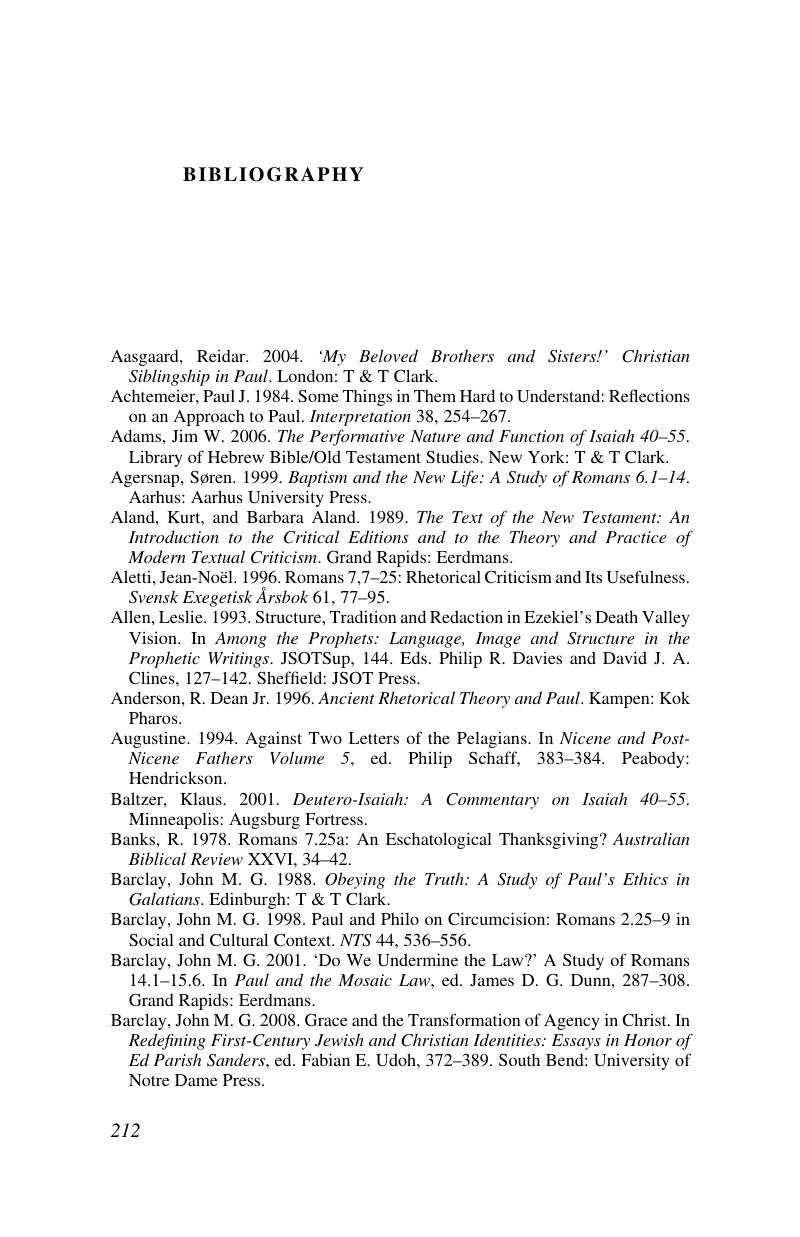Book contents
- Romans 7 and Christian Identity
- Society for New Testament Studies
- Romans 7 and Christian Identity
- Copyright page
- Contents
- Preface
- Abbreviations
- 1 Introduction
- 2 Speech-in-Character
- 3 Romans 3:7
- 4 Romans 6:12–19
- 5 Romans 7:7–13
- 6 Romans 7:14–25
- 7 Conclusion
- Appendix 1 The First-Person Singular in Romans
- Bibliography
- Index of Ancient Sources
- Subject And Author Index
- References
Bibliography
Published online by Cambridge University Press: 12 December 2017
- Romans 7 and Christian Identity
- Society for New Testament Studies
- Romans 7 and Christian Identity
- Copyright page
- Contents
- Preface
- Abbreviations
- 1 Introduction
- 2 Speech-in-Character
- 3 Romans 3:7
- 4 Romans 6:12–19
- 5 Romans 7:7–13
- 6 Romans 7:14–25
- 7 Conclusion
- Appendix 1 The First-Person Singular in Romans
- Bibliography
- Index of Ancient Sources
- Subject And Author Index
- References
Summary

- Type
- Chapter
- Information
- Romans 7 and Christian IdentityA Study of the ‘I' in its Literary Context, pp. 212 - 227Publisher: Cambridge University PressPrint publication year: 2017

